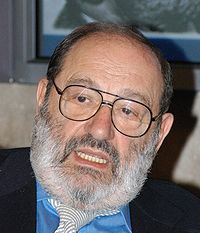httpv://www.youtube.com/watch?v=MqgmoLpzw4E
Bill Maher’s Armageddon weather forecast
It’s 6.30 and we’re still here. But then so probably is our pro-family values (i.e. anti-gay marriage and anti-abortion), pro-corporate and anti-NGO evangelical prime minister. But as long as we are all here and in it together, we should pay close attention to any overlap between public policy and the fundamentalist religious beliefs of Stephen Harper and those who advise him.
For example, the proposed “Office of Religious Freedom” doesn’t sound like it’s about “freedom” at all, but about imposing particular religious values upon our foreign affairs and commitments, where they have no place. Harper and his supporters in the evangelical community can believe to whatever degree they wish that Armageddon is coming and that Canada has a specific role to play. That’s their business. But they can’t make it a problem for the vast majority of Canadians who do not share it.
Update: Article 11 of the “Statement of Faith” of the Christian and Missionary Alliance based in Colorodo reads:
The second coming of the Lord Jesus Christ is imminent(32) and will be personal, visible, and premillennial.(33) This is the believer’s blessed hope and is a vital truth which is an incentive to holy living and faithful service.(34)
Articles 10 and 11 of “The Statement of Faith” of the Canadian CMA, of which Harper is a member, read:
10. There shall be a bodily resurrection of the just and of the unjust; for the former, a resurrection unto life;22 for the latter, a resurrection unto judgment.23
11. The second coming of the Lord Jesus Christ is imminent and will be personal and visible.24 As the believer’s blessed hope, this vital truth is an incentive for holy living and sacrificial service toward the completion of Christ’s commission.25″
There appears to be a deep-seated premillennarian disposition in CMA theology which is not explicitly present in the Canadian branch of the church, but the shared theological base seems otherwise consistent. particularly with regard to the resurrection to “life” of the “just” and a resurrection to “judgment” of the “unjust.”
Furthermore, Marci McDonald’s reporting suggests that there are elements of a growing premillennarian faction in Canada, apparently encouraged by increasing American influence and the use by the PMO of American religious advisers. In any event, the shared doctrine that the second coming is “imminent, personal and visible” seems to indicate an exclusionary fundamentalism. That in turn appears to be consistent with openly proclaimed intolerance for secularly evolved priorities defined by generations of popular will and expressed by many decades of government initiatives and legislation. The hostility to women’s rights, gay rights, and rights in general has to be coming from somewhere, and its sources do not seem to be just a difference of political opinion.
We’ll be returning to the efforts pursued so far by the Conservatives to turn back these secular advances, as well as their continued efforts to do so on other fronts: such as the law and order bill promised within the next 100 days that will reportedly compel Internet Service Providers to provide the police with increased power to conduct internet surveillance of citizens without warrants.


